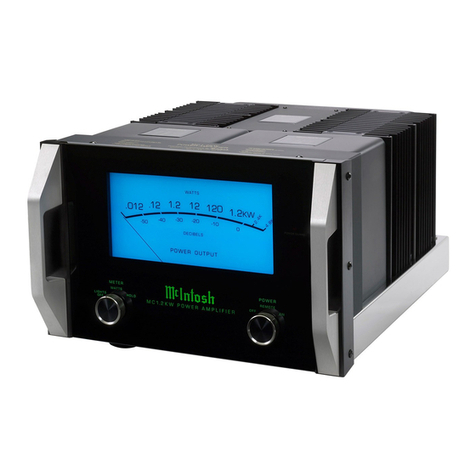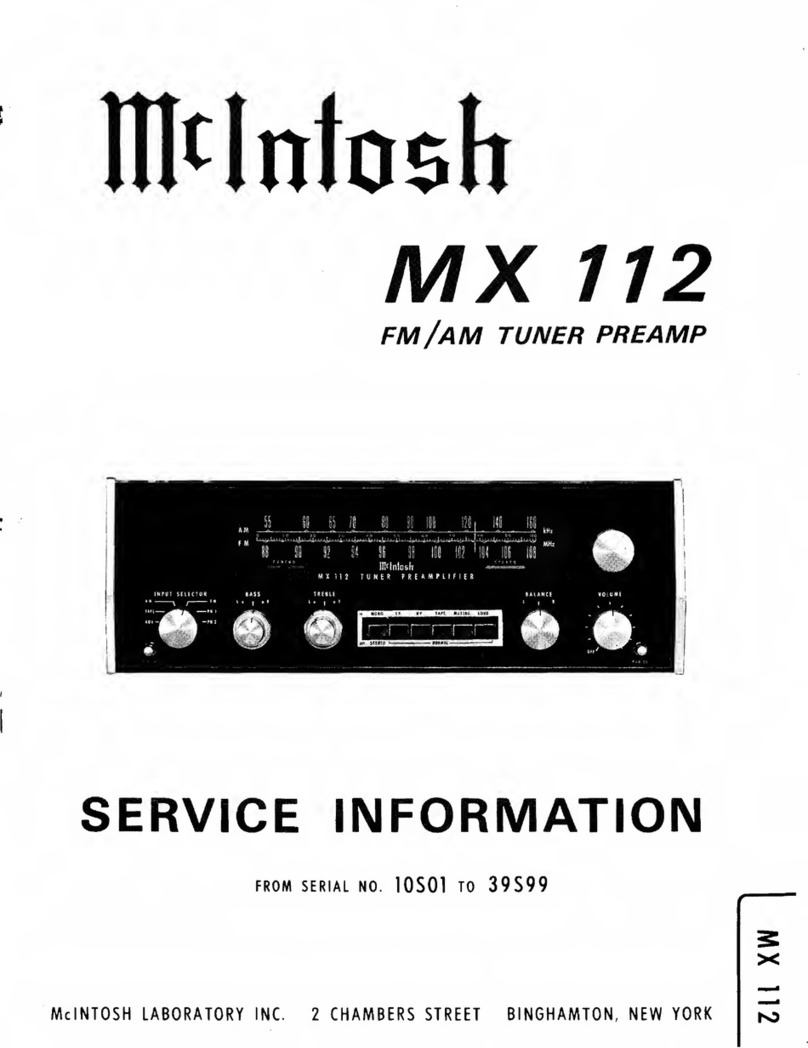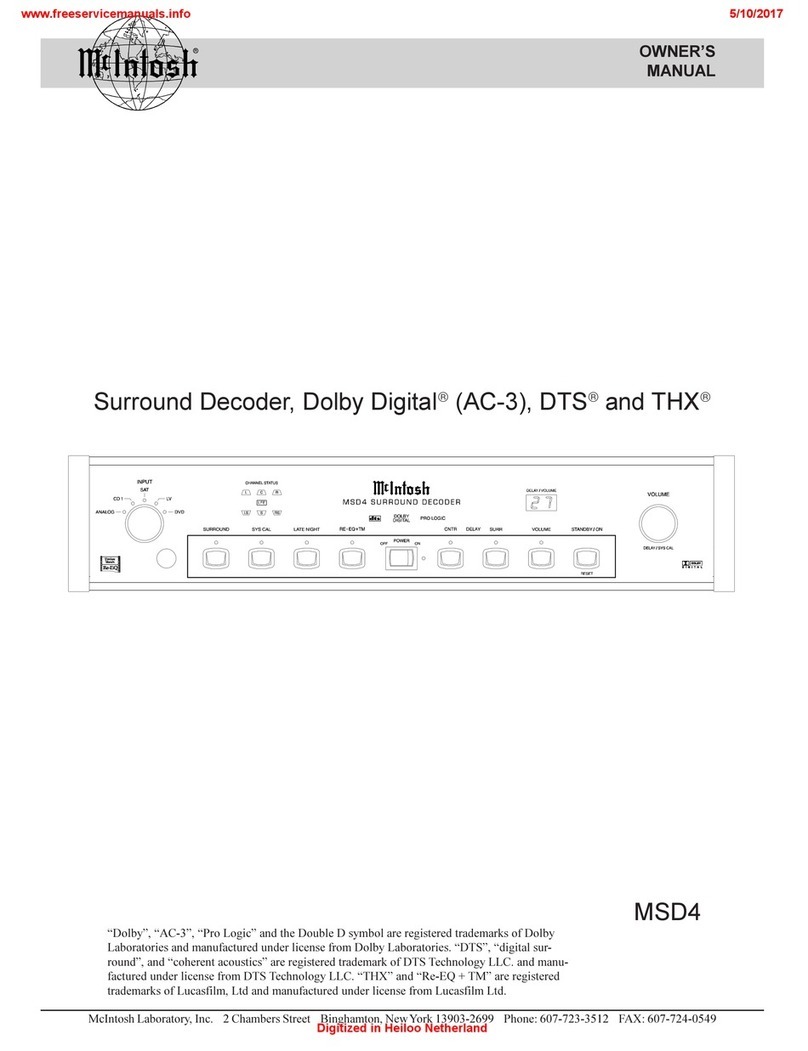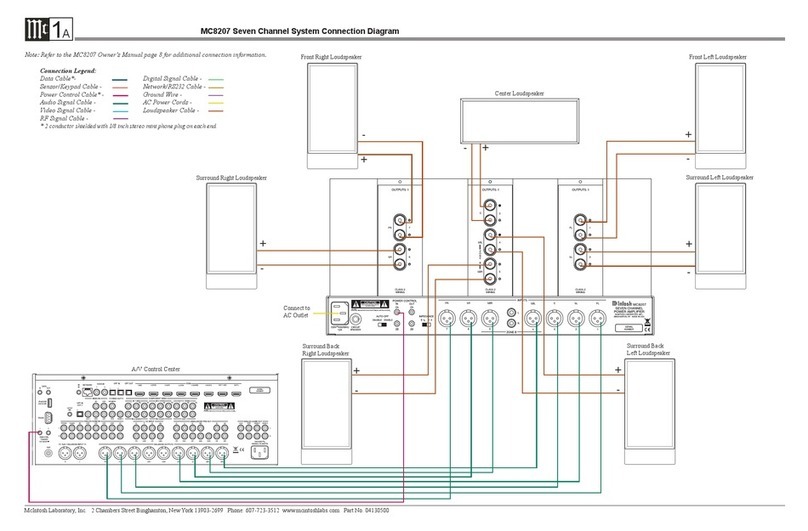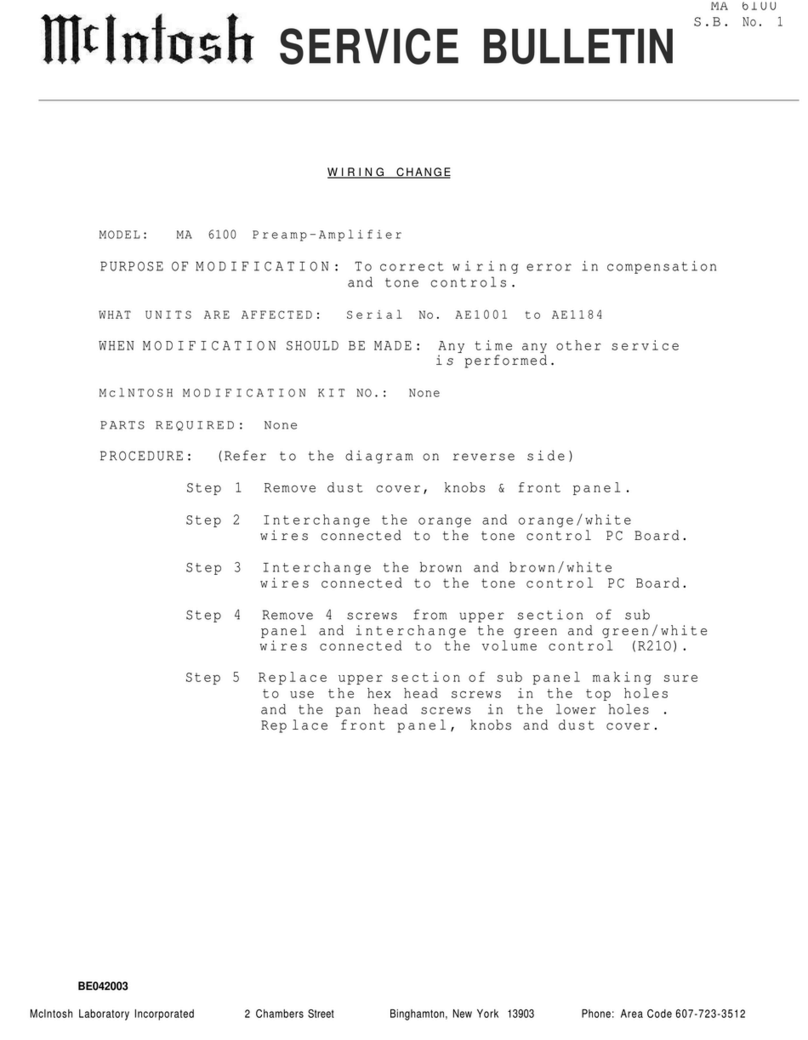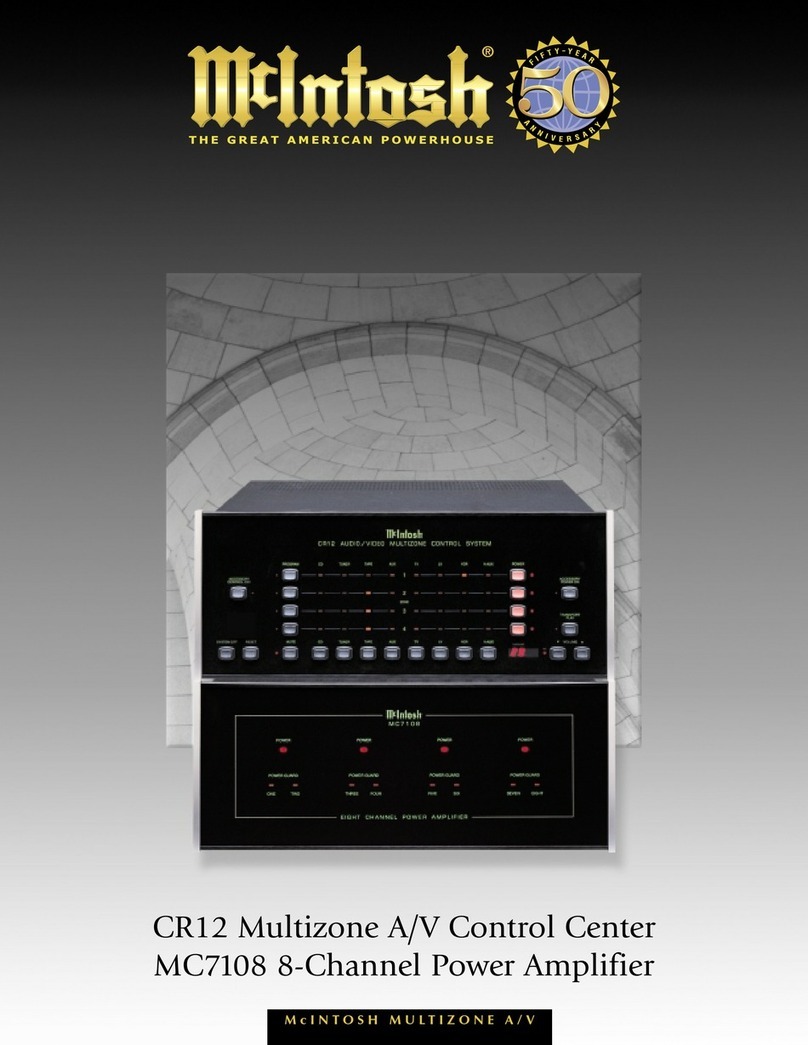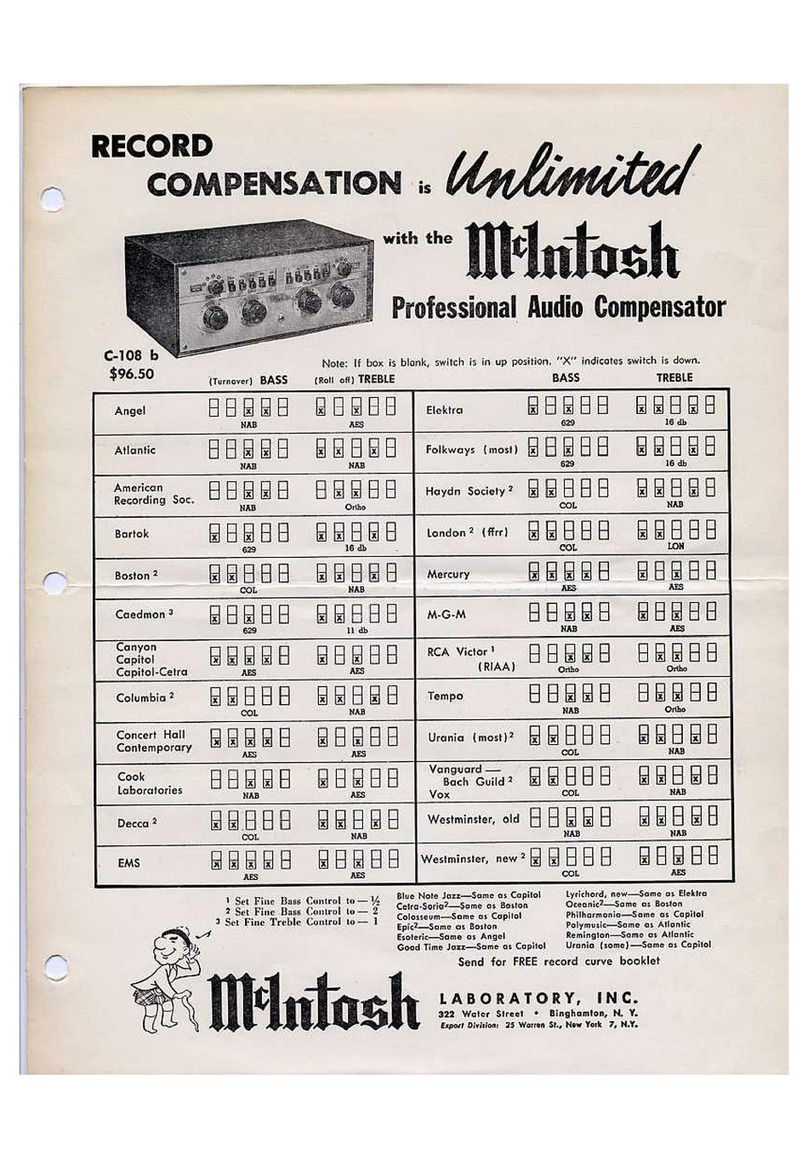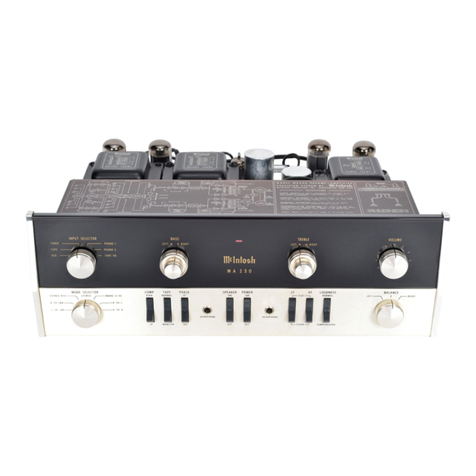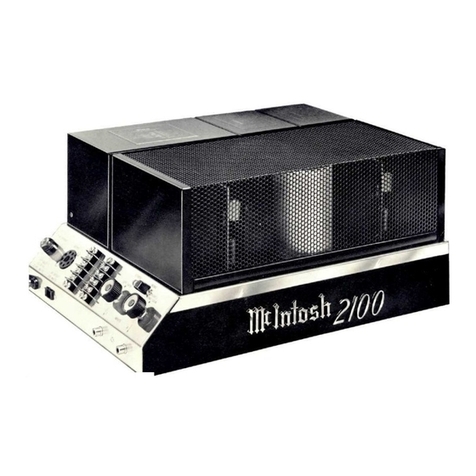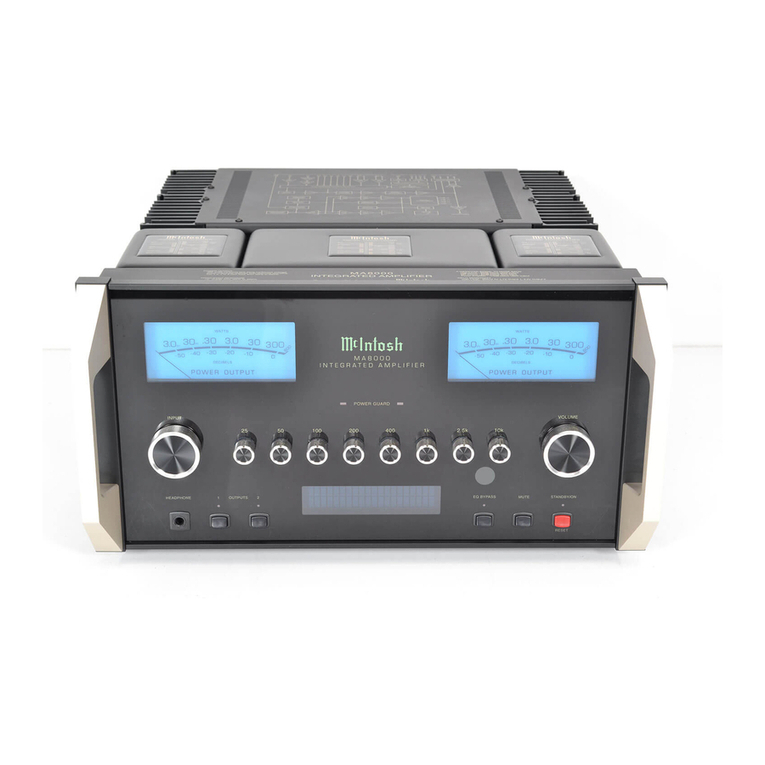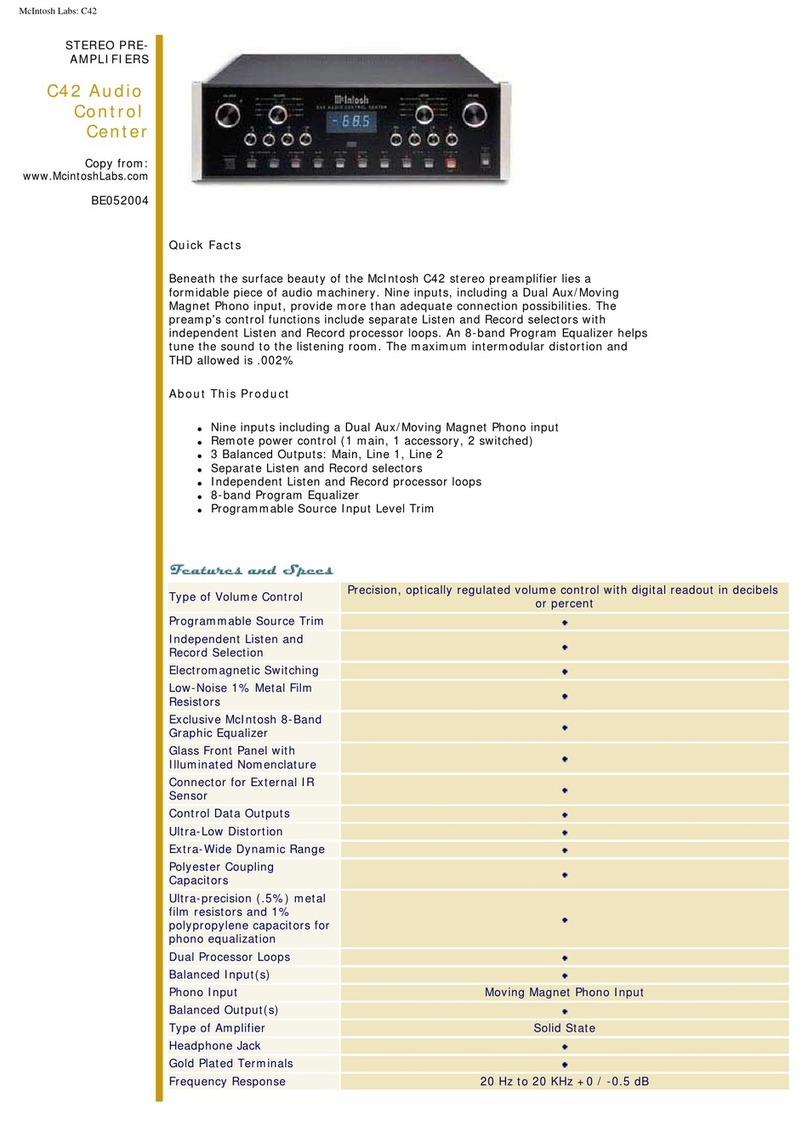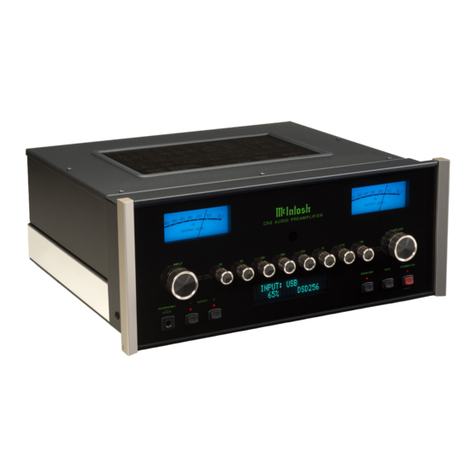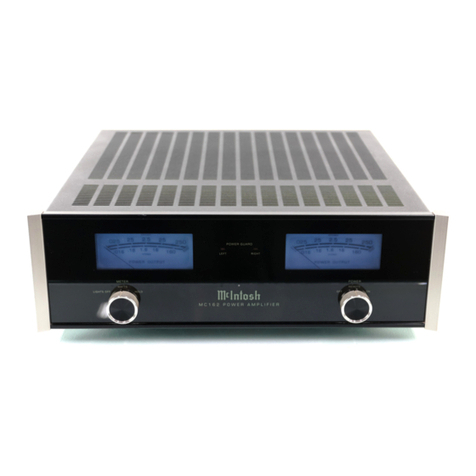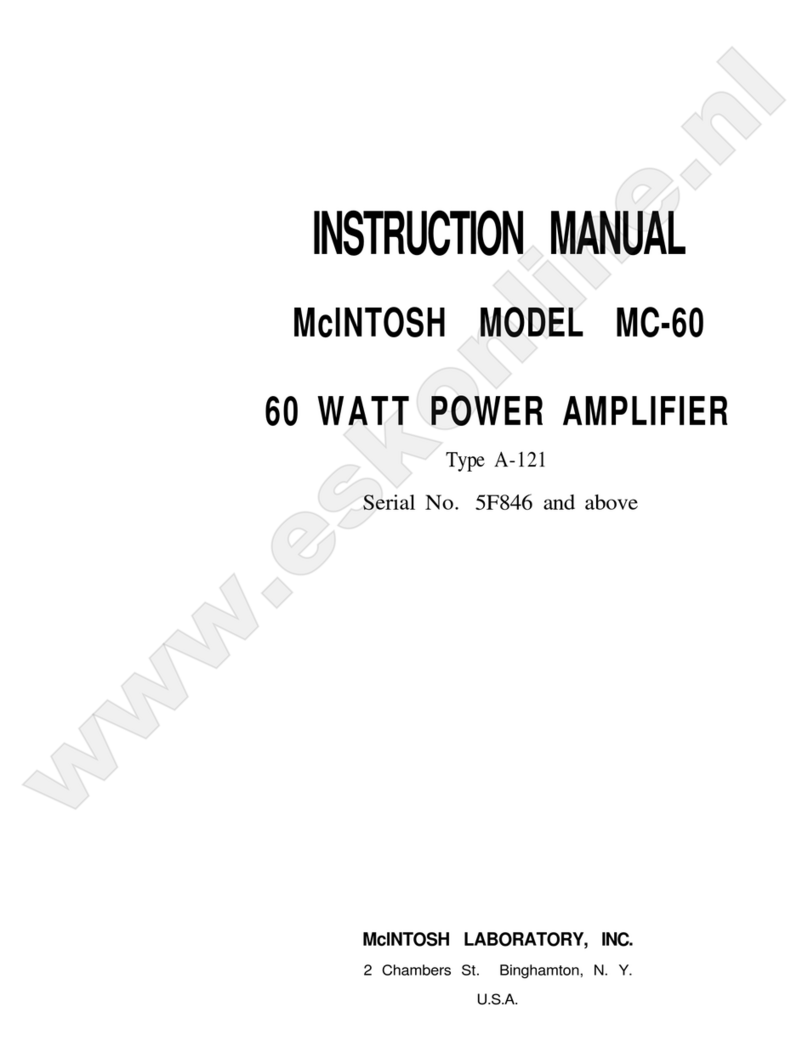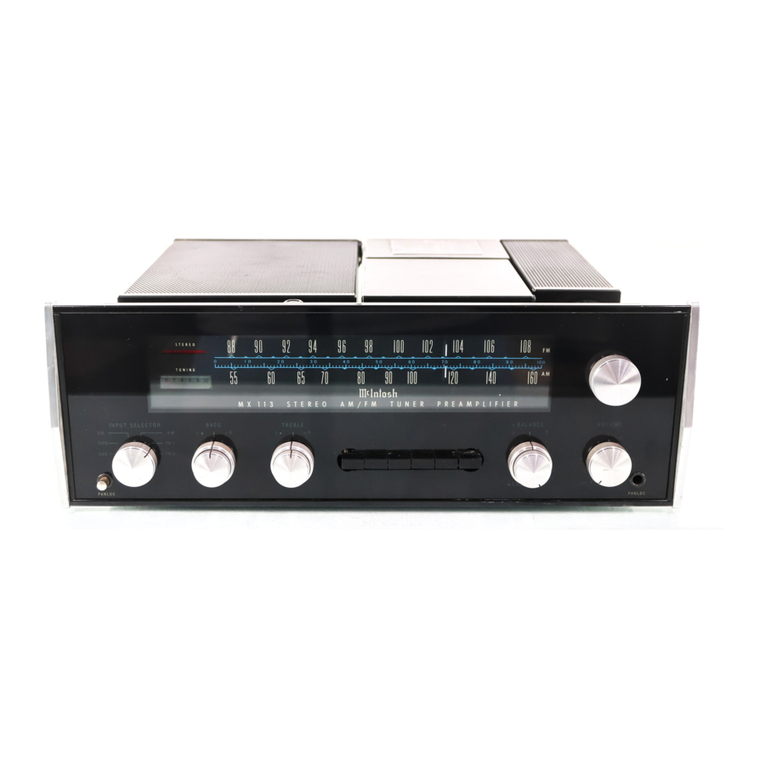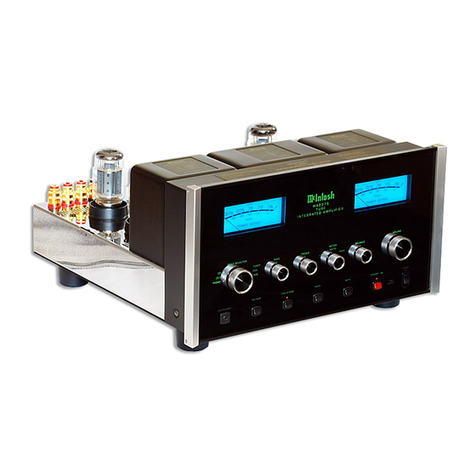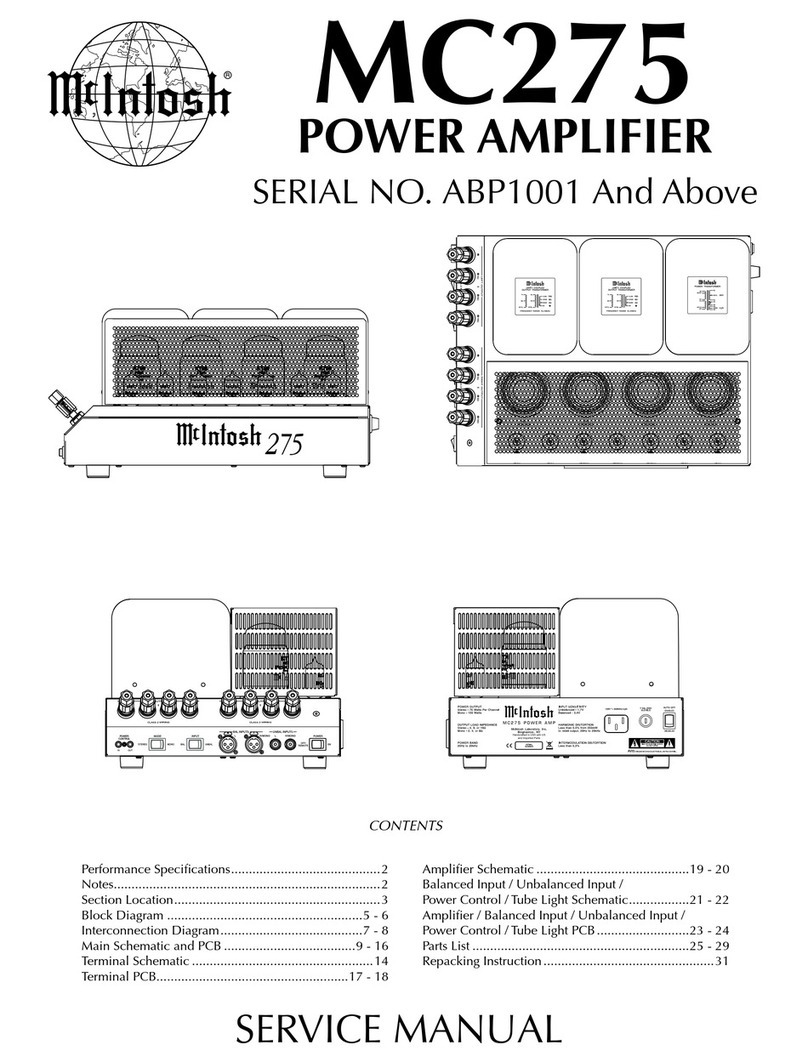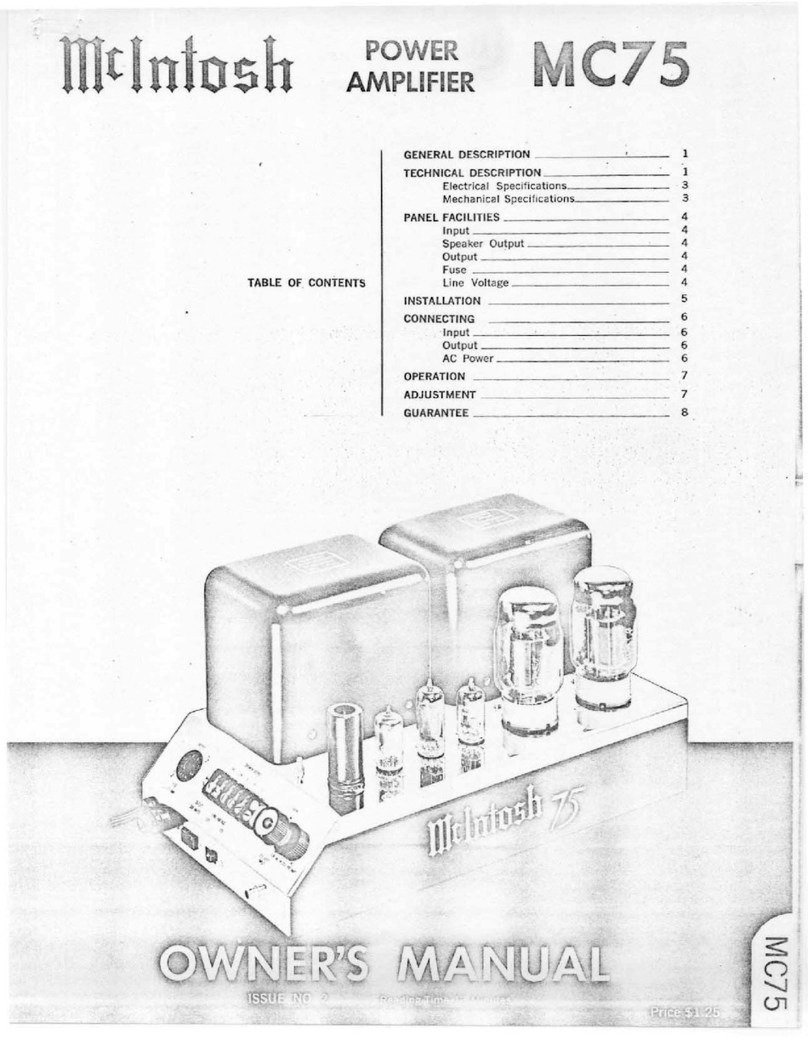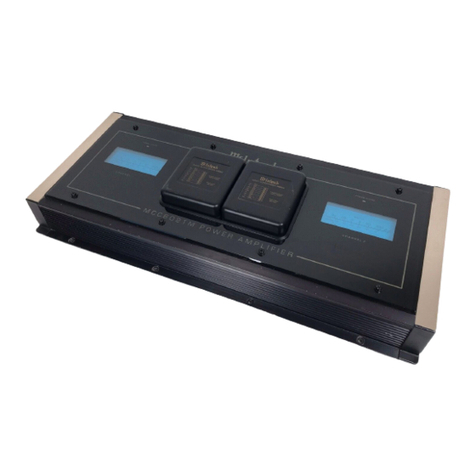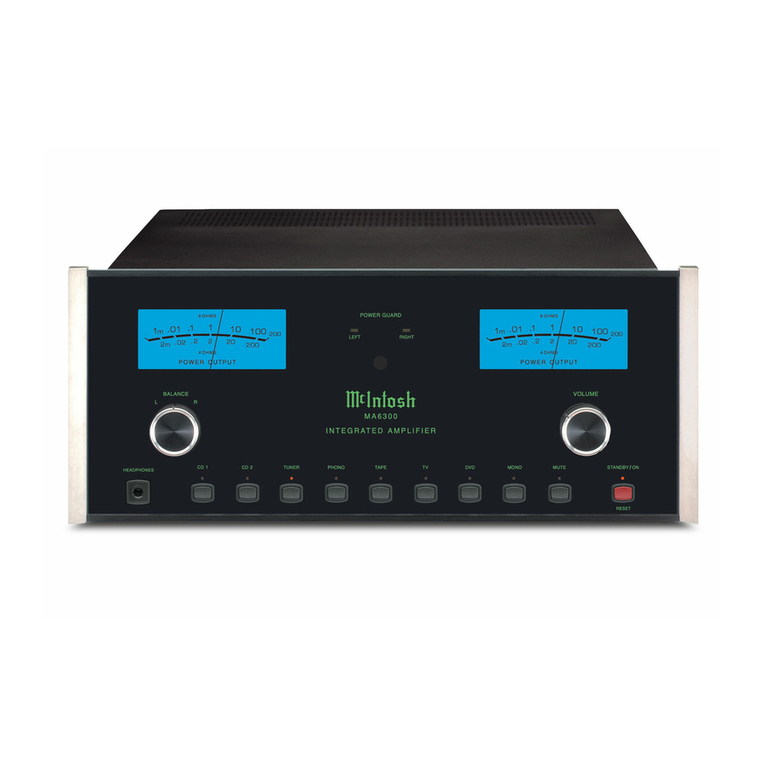5
IMPORTANT SAFETY
INSTRUCTIONS!
PLEASE READ THEM BEFORE
OPERATING THIS EQUIPMENT.
General:
1. Read a the safety and operating instructions
contained in this owners manua , before operat-
ing this equipment.
2. Retain this owners manua for future reference
about safety and operating instructions.
3. Adhere to a warnings and operating instructions.
4. Fo ow a operating and use instructions.
5. arning: To reduce risk of fire or electrical
shock, do not expose this equipment to rain or
moisture. This unit is capable of producing
high sound pressure levels. Continued expo-
sure to high sound pressure levels can cause
permanent hearing impairment or loss. User
caution is advised and ear protection is recom-
mended when playing at high volumes.
6. Caution: to prevent electrical shock do not use
this (polarized) plug with an extension cord,
receptacle or other outlet unless the blades can
be fully inserted to prevent blade exposure.
Attention: pour pevenir les chocs elecriques
pas utiliser cette fiche polarisee avec un
prolongateur, une prise de courant ou un autre
sortie de courant, sauf si les lames peuvent
etre inserees afond ans en laisser aucune
partie a decouvert.
7. For added protection for this product during a
ightning storm, or when it is eft unattended and
unused for ong periods of time, unp ug it from
the wa out et. This wi prevent damage to the
product due to ightning or power ine surges.
8. Do not use attachments not recommended in this
owners manua as they may cause hazards.
Installation:
9. Locate the equipment for proper venti ation. For
examp e, the equipment shou d not be p aced on
a bed, sofa, rug, or simi ar surface that may b ock
venti ation openings; or, p aced in a bui t-in in-
sta ation, such as a bookcase or cabinet, that may
impede the f ow of air through the venti ation
openings.
10. Locate the equipment away from heat sources
such as radiators, heat registers, stoves, or other
app iance (inc uding amp ifiers) that produce
heat.
11. Mount the equipment in a wa or cabinet on y as
described in this owners manua .
12. Do not use this equipment near water; for ex-
amp e, near a bathtub, washbow , kitchen sink,
aundry tub, in a wet basement or near a swim-
ming poo , etc.
13. Do not p ace this product on an unstab e cart,
stand, tripod, bracket, or tab e. The equipment
may fa , causing serious injury to a person, and
serious damage to the product.
Connection:
14. Connect this equipment on y to the type of AC
power source as marked on the unit.
15. Route AC power cords so that they are not ike y
to be wa ked on or pinched by items p aced upon
or against them, paying particu ar attention to
cords at p ugs, convenience receptac es, and the
point where they exit from the instrument.
16. Do not defeat the inherent design features of the
po arized p ug. Non-po arized ine cord adapters
wi defeat the safety provided by the po arized
AC p ug. If the p ug shou d fai to fit, contact
your e ectrician to rep ace your obso ete out et.
Do not defeat the safety purpose of the ground-
ing-type p ug.
17. Do not over oad wa out ets, extension cords or
integra convenience receptac es as this can resu t
in a risk of fire or e ectric shock.
Safety Instructions
WARNING SHOCK HAZARD -
DO NOT OPEN.
The lightning flash with arrowhead, within an equilat-
eral triangle, is intended to alert the user to the pres-
ence of uninsulated dangerous voltage within the
products enclosure that may be of sufficient magni-
tude to constitute a risk of electric shock to persons.
AVIS RISQUE DE CHOC -
NE PAS OUVRIR.
The e clamation point within an equilateral triangle
is intended to alert the user to the presence of im-
portant operating and maintenance (servicing) in-
structions in the literature accompanying the appli-
ance.
NO USER-SERVICEABLE
PARTS INSIDE. REFER
SERVICING TO QUALIFIED
PERSONNEL
To prevent the risk of electric shock, do not remove
cover (or back). No user serviceable parts inside.
Refer servicing to qualified personnel.
